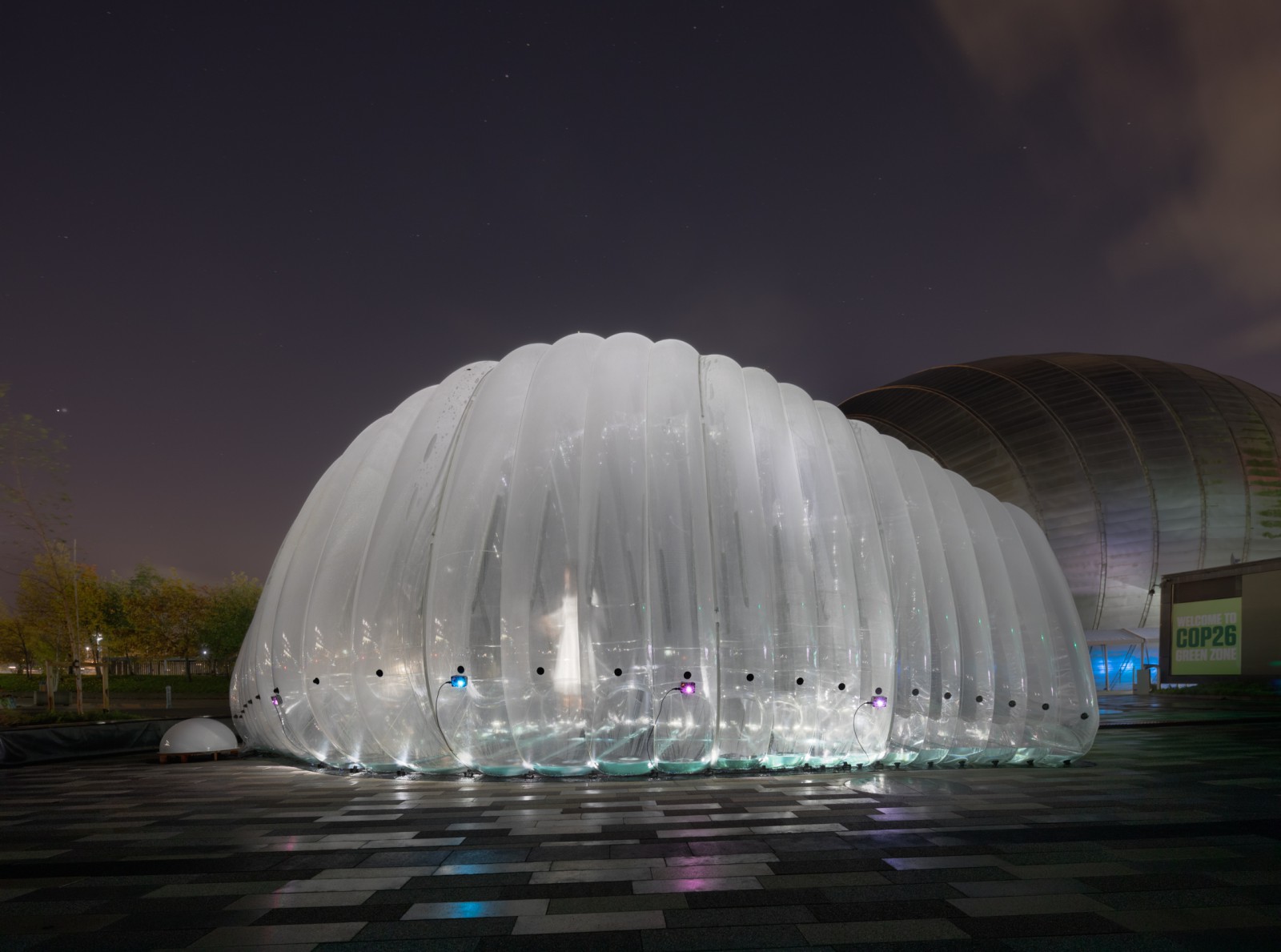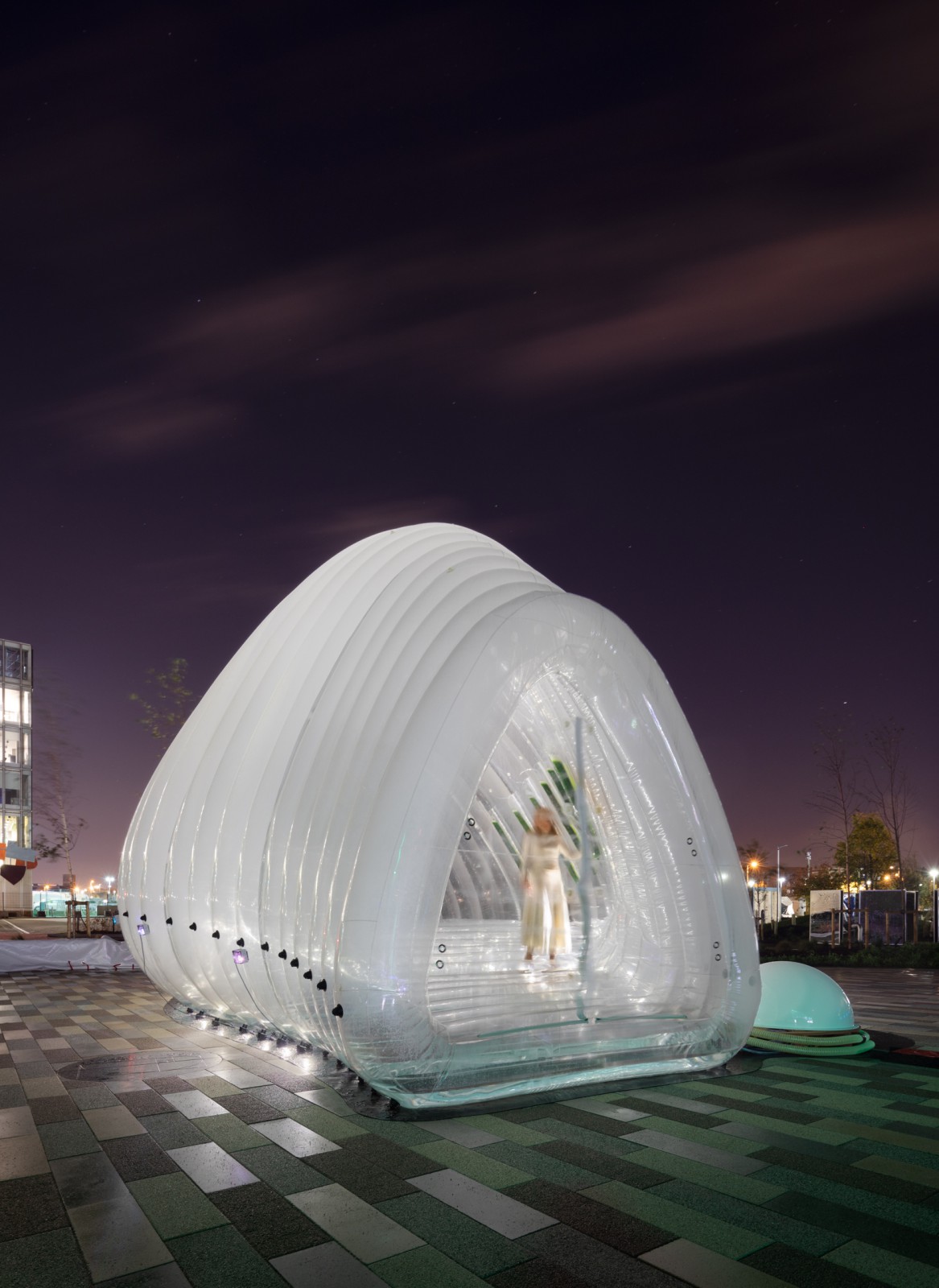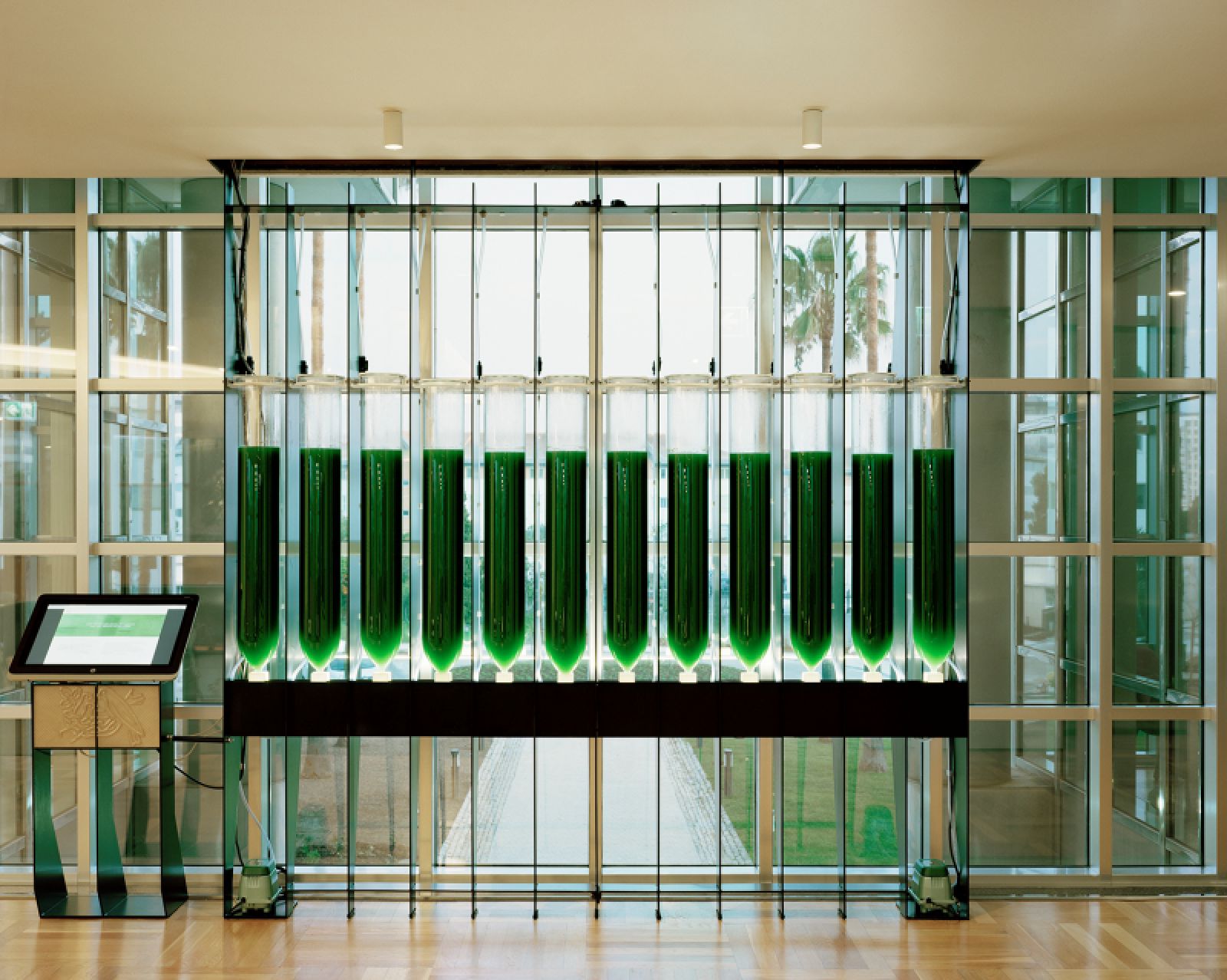On the occasion of COP26, the 26th United Nations Climate Change conference that will take place from 31 October to 12 November 2021 in the Scottish Event Campus (SEC) in Glasgow, ecoLogicStudio will present two projects related to air pollution and carbon neutrality: the Air Bubble air-purifying eco-machine and the BioFactory system.
Both on-going research projects, integrating PhotoSynthetica technology, pioneered by the studio, have been developed in accordance with some of the main goals of the event, such as reaching net zero emissions by the middle of the century, protecting and restoring ecosystems, and building resilient infrastructures.
Air Bubble air-purifying eco-machine
Following the successful Air Bubble biotechnological playground project built in Warsaw (Poland), ecoLogicStudio presents the Air Bubble air-purifying eco-machine, which has been installed in front of the Glasgow Science Centre within the COP26’s Green Zone area. The project has been developed in partnership with Otrivin®. The eco-machine is made of 99% air, water and living photosynthetic air-purifying Chlorella cultures.
This new bio-digital project demonstrates how the advanced integration of biotechnology in the built environment can lead to a new generation of living, growing architectures, where beauty and efficient ecological performance are combined. The project encourages visitors, and especially children, to directly interact and experience the air cleaning capabilities of micro algae cultures, while immersing themselves into a bubble of freshly metabolized oxygen.
The playful softness of the organic structure, akin to a gigantic bouncy jellyfish, is a direct manifestation of the biotechnology it integrates. Air Bubble air-purifying eco-machine is also ecoLogicStudio’s first pneumatic bioreactor. It contains 6.000 liters of water supporting 200 liters of living Chlorella cultures filtering 100 liters of polluted urban air every minute.
This process updates the traditional qualities of inflatable structures to create the eco-machine. The result is a responsive system, with air purifying capability, exceptional wind resistance and unique deployability. The incredible lightness of the empty membrane makes it uniquely low in embodied carbon and minimizes emissions associated with transportation, installation and dismantling. The outdoor membrane is monitored in real-time by an array of accelerometers, sensing the wind and inducing vibrations in the pneumatic structure.
These sensors activate a responsive array of growth lighting that in turn support algal photosynthesis thus increasing air purification. The entire bio-digital organism evolves a new kind of symbiosis whereby the more people play the cleaner the air becomes. Air Bubble air-purifying eco-machine combines a lightweight inflatable technology with 24 photobioreactors (12 on each side) that are hosted in the inflatable system to create a unique microclimate inside the structure.
BioFactory
ecoLogicStudio has recently unveiled the BioFactory architectural system that will transform the way we look at industrial architecture. The system, integrating algae photobioreactors within membrane cladding, is suitable for both commercial buildings and factory warehouses. The first BioFactory pilot scheme has been installed in Lisbon, Portugal, at Nestlé HQ.
Food grade micro-algae are grown inside the photobioreactors while feeding on the CO2 emissions of the factory itself. Freshly harvested biomass enters the factory supply chain to become a renewable and sustainable raw material for carbon neutral food products and packaging. This circular process changes the rules of efficiency and makes bio-factories capable of self-regulation and learning. As the system grows, it becomes more resilient and ultimately evolves higher levels of productivity.
A BioFactory is characterized also by a low carbon construction process that will make the cladding carbon negative in its lifetime. Its adjustable and intelligent shading system reduces buildings’ cooling loads while allowing natural light in. The project sets employees’ health and wellbeing as its priority. Adaptive shading and direct contact with dynamic living cultures increases psychological wellbeing and stimulates a creative approach to work. Source by ecoLogicStudio and photos Courtesy of Mint List.









